


Mostly just stuff I am doing to help the planet
Cloning Pohutukawa makes sense if you’re breeding them for a specific purpose. In my case erosion control. I just want Pohutukawa that are great at holding onto cliffs.
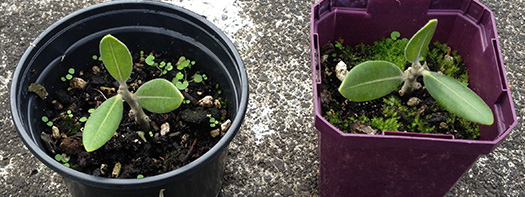
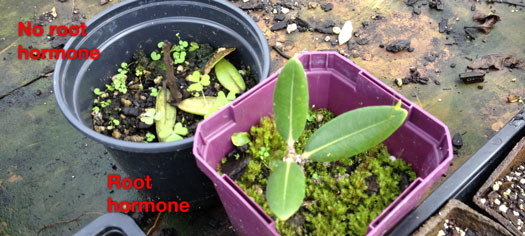
It’s growing slowly tho. While my seedlings are doing great.
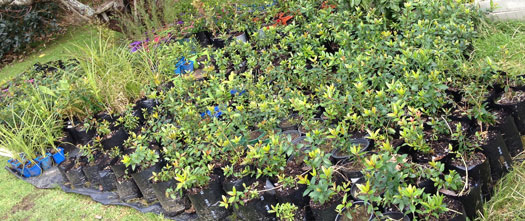
After presenting at a great event to discuss the future of Non-Beach Breeding Dotterel I left with some great advice. I plan to make Chick Shelters, when the parent alerts the chick I need to have one of these (every 10 meters or so) that the chick can run to.

I need to make it even shorter and longer, just to be sure. Interestingly I tried adding my decoy chick and it just worried the Pukeko who turned their heads sideways to stare at it in the shelter.











Everything is in place, now we just need some chicks. I need to do observational work to test a few things:
1. Do adults avoid the shelters?
2. Do the chicks use the shelters?
3. Are the shelters effective at protecting chicks from predators? If not lets lower them and check point 2.
4. Other benefits/ problems?
RESULTS





1. Do adults avoid the shelters? No.
2. Do the chicks use the shelters? No, small chicks hide in the grass which is quite long in spring. None of the small chicks lived long enough to be bigger chicks that might have made a longer dash to a chick shelter. The mown area created did not attract any Dotterel (Just Pied stilts, Herons and Spur Winged Plover).
3. Are the shelters effective at protecting chicks from predators? Untested, maybe try them at a mown or beach site.
4. Other benefits/ problems:

1:15 today, I was horrified to discover Omaru creek had gone white. I called the Pollution prevention hotline case #14/1714.

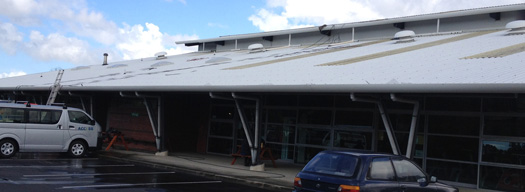



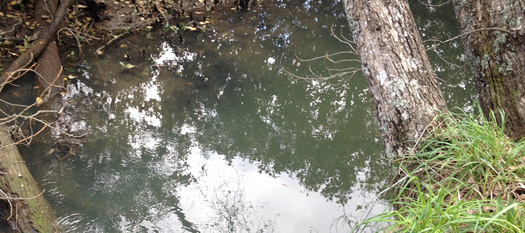
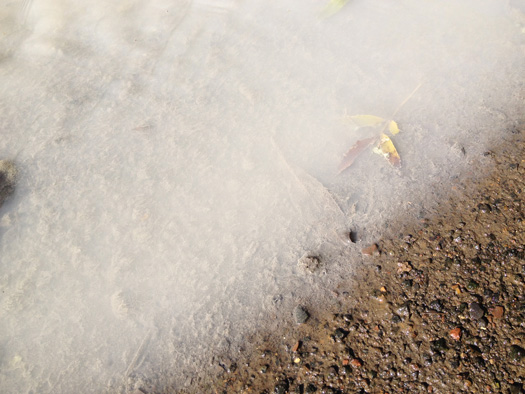
If this is a regular thing (blasters are supposed to divert the downpipes) then I bet 90% + of the zinc contamination in the Tamaki Estuary comes from water blasting roofs, not regular wear from rainfall.
UPDATE: 4:30 PM
Pollution prevention made it out and then went to talk to the TRC (Tamaki Recreation Centre). Apparently they need to make sure their contractors are not cutting corners and doing horrible stuff like this. I believe the TRC is a council facility partnership.
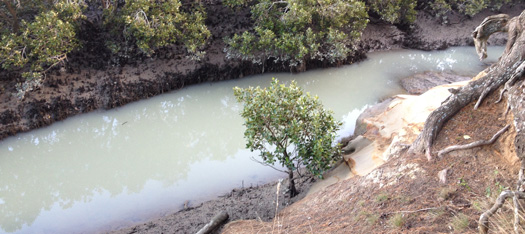
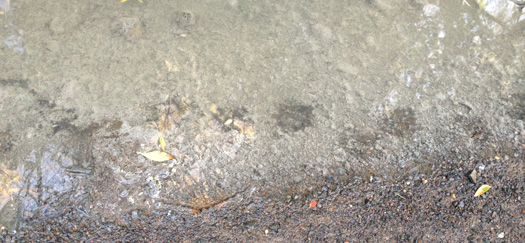
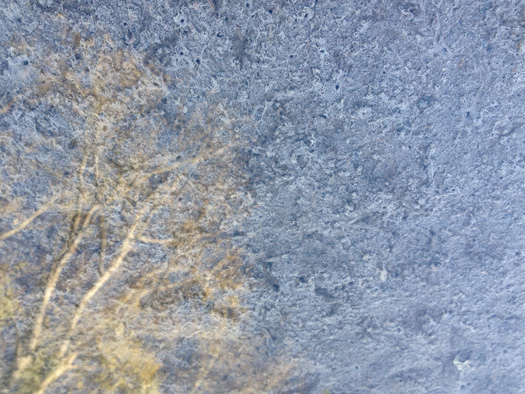
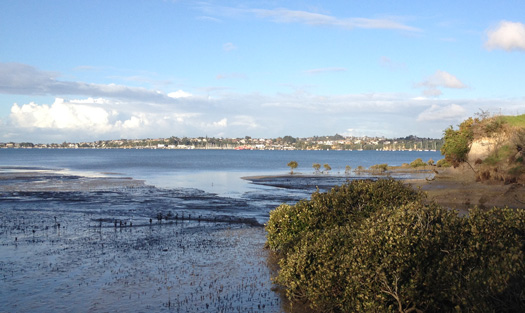
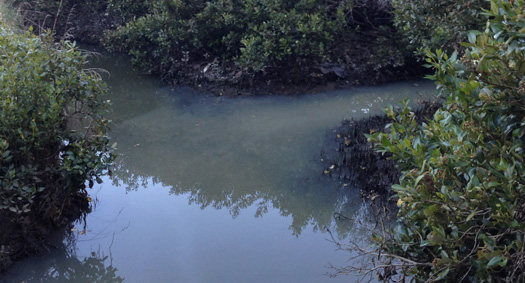
UPDATE: 2 Days later and I can’t see any obvious ecological damage. I imagine it would be more obvious in a less polluted stream. Like a lot of contamination events the effects will be largely long-term.

UPDATE: 30 July. A super nice guy from the TRC got in touch, they were very concerned about the event and have put in place processes to make sure it does not happen again.
Access also gave me a call, they told me this was a one off accident. The council confirmed this and accordingly let them off with a small fine of around $400). I think the maximum fine is only $1,000, if Mr Burns was running one of these companies he would definitely risk it (given the difficulty in detection). Access invited me down to give a 15min talk to the team about the Auckland environment, which I did. They also walked me through some of their process which are designed to keep the contaminants out of the stormwater system. Most interesting to me was listening to the guys talk about their day while I waited for the meeting to start, they have to use really toxic chemicals to clean buildings. I put hundreds of hours into helping the environment every year, but these guys can probably make a bigger difference in just a few hours by doing the right thing.
Territorial call (were-wit) of an NZ Dotterel. Note the distinctive groan from the upper throat. You can see it happen at 5 seconds but is hard to hear.
Or what is left of them! Even the oysters are swamped by mud from the Tamaki estuary. Wikipedia needs updating:
“The flatter areas to the west have very large part submerged mussel beds which extent out 100 m (328 ft) from the shore preventing easy landing”.
Now the exposed rocks are surrounded by thick mud.
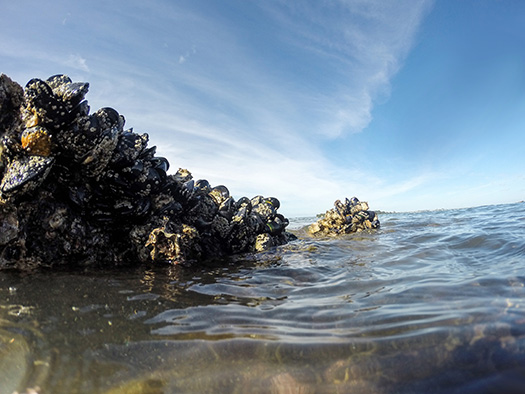
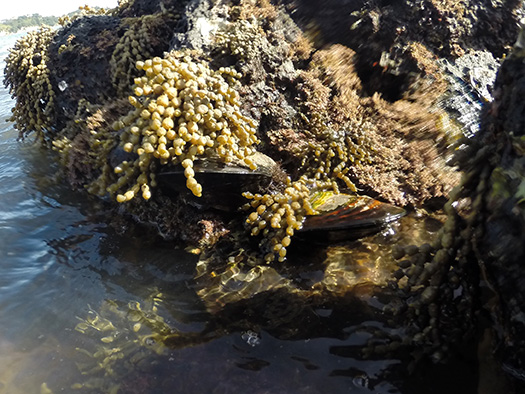
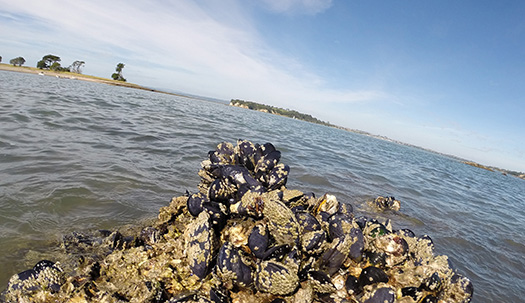
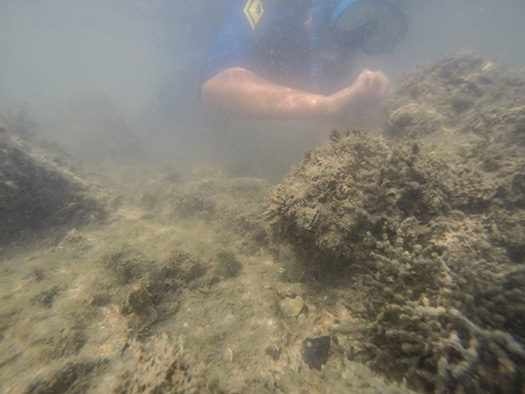
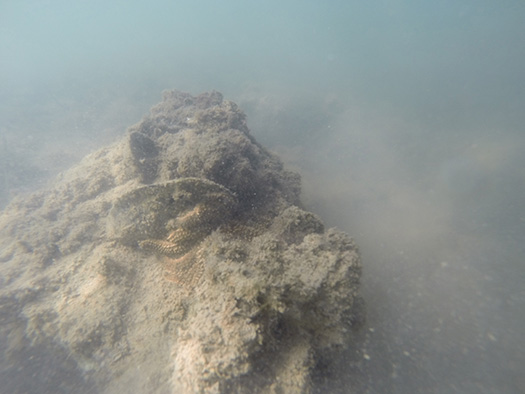
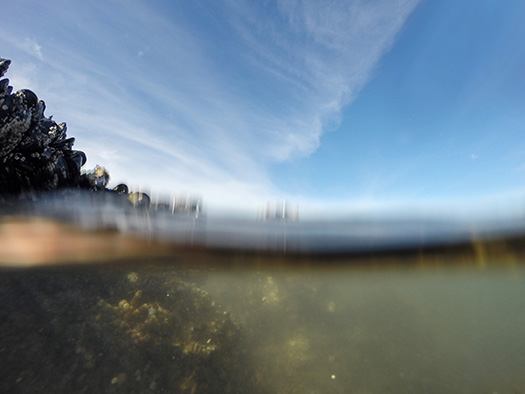
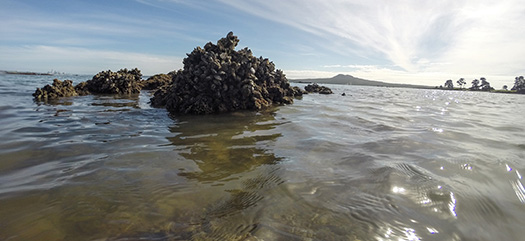
I was very pleased to see so many green lipped mussels here. I thought it might be interesting to survey them as there size and abundance are good indicators for how a restored reef might manage this close to Auckland City.

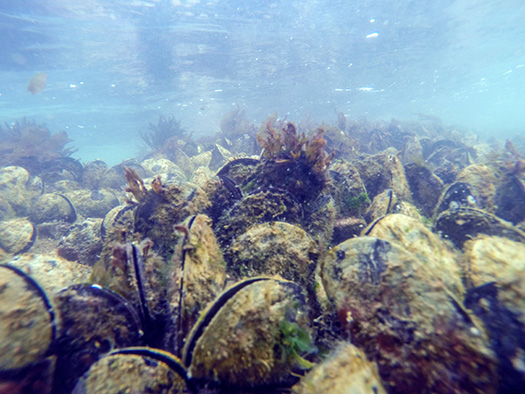
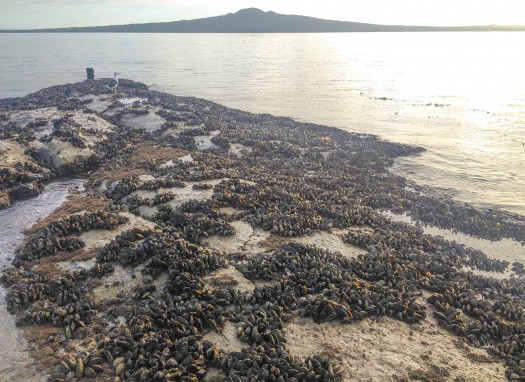
I saw the odd blue mussel, cats eye, kina, eleven arm, cushion star, asian tunicate and fanworm but green lipped mussels were by far the dominant species. There were only a few spots where oysters and barnacles were coming out on top.

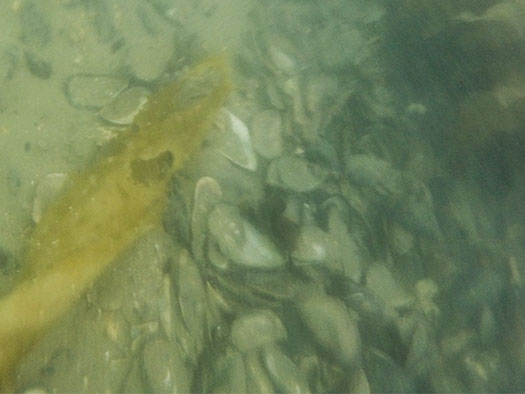
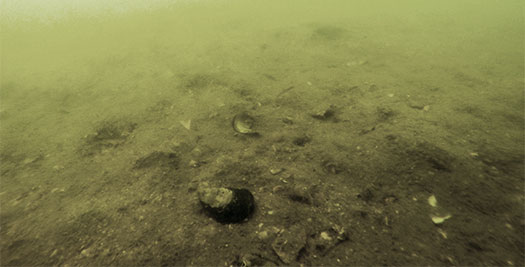



Most mussels were 7-8cm long. But there were a few around the 10cm mark. I think I was looking at two generations?
UPDATE: November 2016
The green lipped mussels have been heavily harvested. There are maybe 20-30 adults left across both reefs. Some juveniles amongst the remaining blue mussels. Rock oysters and blue mussels now the dominant species.
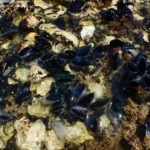
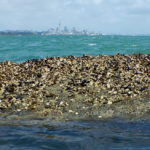
Source: Environmental Condition and Values of Mangere Inlet, Whau Estuary and Tamaki Estuary (2008)
 Coastal Protection Area 1. Pakuranga Creek and Roost: One of the roosting sites used by some of the hundreds of wading birds that feed within the Tamaki Estuary. The whole of the Tamaki Estuary is a regionally important wildlife habitat and has been selected by the Department of Conservation as an Area of Significant Conservation Value (ASCV).
Coastal Protection Area 1. Pakuranga Creek and Roost: One of the roosting sites used by some of the hundreds of wading birds that feed within the Tamaki Estuary. The whole of the Tamaki Estuary is a regionally important wildlife habitat and has been selected by the Department of Conservation as an Area of Significant Conservation Value (ASCV).
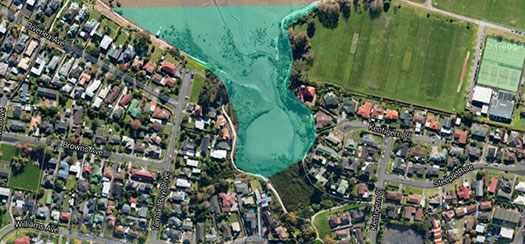 Coastal Protection Area 1. Tamaki River East Roost. One of the roosting sites used by some of the hundreds of wading birds that feed within the Tamaki Estuary.
Coastal Protection Area 1. Tamaki River East Roost. One of the roosting sites used by some of the hundreds of wading birds that feed within the Tamaki Estuary.
No birds roost here now. Are they still CPA’s? How has the habitat changed:
